| Srl | Item |
| 1 |
ID:
083985
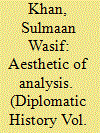

|
|
|
| 2 |
ID:
140990


|
|
|
|
|
| Summary/Abstract |
The Intelligence Reform and Terrorism Prevention Act of 2004 (IRTPA) created a Director of National Intelligence (DNI) and ordered him and his Office of the Director of National Intelligence (ODNI) to improve intelligence analysis in the wake of two major perceived U.S. intelligence failures: al-Qaeda's attacks of 11 September 2001 (9/11) and the National Intelligence Estimate (NIE) on Iraqi weapons of mass destruction (WMD) of September 2002.1 Observers’ initial assessments of the IRTPA were generally that the DNI and his office would be weak and have little effect on the U.S. Intelligence Community (IC) other than adding a wasteful layer of bureaucracy.
|
|
|
|
|
|
|
|
|
|
|
|
|
|
|
|
| 3 |
ID:
082829
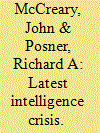

|
|
|
|
|
| Publication |
2008.
|
| Summary/Abstract |
In the autumn of last year the National Intelligence Council issued a National Intelligence Estimate that states (in a portion of the NIE that has been published) with 'high confidence' that Iran years ago suspended its development of nuclear weapons. This paper questions the wisdom of a consensus intelligence document bound to be published in one form or another, and the soundness of the analysis in it, which pivots on speculation about Iranian decision making and on an ambiguity in the very meaning of 'suspending' a nuclear-weapons program while continuing to produce highly enriched uranium. These questions lead in turn to questions concerning the ambitious reorganization three years ago of the US intelligence system
|
|
|
|
|
|
|
|
|
|
|
|
|
|
|
|
| 4 |
ID:
094815


|
|
|
|
|
| Publication |
2010.
|
| Summary/Abstract |
Although Israel constitutes an interesting case for the study of civil-military relations, the role played by its Directory of Military Intelligence (AMAN) has rarely been discussed in this context. This role is of special interest, since Israel is the only liberal democracy today in which a military intelligence service functions as the leading national estimator not only in military but also in civilian affairs. The unique Israeli model is usually justified by Israel's security concerns-primarily the threat of a sudden conventional attack. To test this model's validity, this article (1) traces and elucidates its historical development; (2) employs five crucial mini case studies to test its practical success or failure; and (3) explains how, in light of the fact that AMAN failed in four of the five cases, its military characteristics create inherent weaknesses that hamper its ability to serve as a high-quality national intelligence estimator.
|
|
|
|
|
|
|
|
|
|
|
|
|
|
|
|
| 5 |
ID:
111622
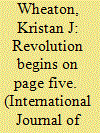

|
|
|
| 6 |
ID:
084061
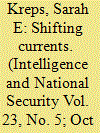

|
|
|
|
|
| Publication |
2008.
|
| Summary/Abstract |
Lost in the political fallout of the Iran National Intelligence Estimate (NIE) of 2007 was any discussion about historical parallels and what those might say about intersection between intelligence, policy, and politics. This article argues that the NIEs on the ballistic missile threat of the 1990s offer a useful analogy. In a short period of time, the NIE's assessment of the threat from so-called 'rogue states' went from modest to non-existent, provoking charges of politicization, eliciting investigations, and pausing the US missile defense program. A similar sequence of events followed the NIEs on Iran, whose tenor appeared to shift from alarmist in 2005 to dismissive in 2007. If the experience of the ballistic missile NIEs is any guide, then it is not clear that the 'cure'- investigations and commissions - are better than the disease. Both cases illustrate the need for the intelligence community to remain detached but not unaware of the policy environment into which these estimates are introduced. They also reaffirm that estimates are just estimates, probabilistic rather than deterministic judgments about future events.
|
|
|
|
|
|
|
|
|
|
|
|
|
|
|
|
| 7 |
ID:
142975
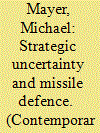

|
|
|
|
|
| Summary/Abstract |
Strategic uncertainty remains a significant challenge for defence planners and national leaders responsible for developing and acquiring future military capabilities. Concerns in the United States over missile proliferation during the 1990s were embodied in the 1999 National Intelligence Estimate (NIE), which predicted the emergence of a long-range ballistic missile threat by 2015. Comparing the NIEs predictions with the actual evolution of the threat reveals not only an overly pessimistic evaluation but also politicization of the intelligence assessment. At the time of its release, the report added to a growing sense of vulnerability and further encouraged policy-makers to make suboptimal missile defence acquisition decisions. In particular, the worst-case scenario thinking exemplified by the 1999 NIE contributed to an unnecessarily rushed testing programme, the premature deployment of homeland missile defence and an oversized system in Europe. Although missile defence may have strategic value, the rush to deploy has resulted in a costly and less effective military capability due to unfounded fears of strategic surprise and entrenched notions of the ballistic missile threat. Strategic uncertainty will always be a challenge, but focusing solely on developing capabilities with less regard to the actual threat environment is a recipe for costly and ineffective weapons systems.
|
|
|
|
|
|
|
|
|
|
|
|
|
|
|
|
| 8 |
ID:
086636
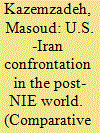

|
|
|
|
|
| Publication |
2009.
|
| Summary/Abstract |
The United States, Israel, and several European allies have explicitly stated that they will not accept the possession of nuclear weapons by the Islamic fundamentalist regime ruling Iran. Iran has defied several UN Security Council resolutions and continued its uranium enrichment. On December 3, 2007, the U.S. released the November 2007 National Intelligence Estimate (NIE) on Iran. If the NIE assessment that Iran could develop nuclear weapons sometimes between 2010 and 2015 is correct, the new American president has twelve options available in dealing with Iran. This study analyzes potential consequences, shortcomings, costs, and benefits of each option.
|
|
|
|
|
|
|
|
|
|
|
|
|
|
|
|